Wed 9 Feb 2011
PRIME TIME SUSPECTS: Part One, by Tise Vahimagi.
Posted by Steve under Columns , TV mysteries[20] Comments
by TISE VAHIMAGI
Part 1: Basic Characteristics (A Swift Overview)
It is hardly surprising, perhaps, that one of the main reasons why so little has been written about the TV crime and mystery genre is that while everyone knows what constitutes as crime drama, no one has been able to define quite what it is. As has often noted before, the general consensus is that the crime and mystery, at its core, is a puzzle.
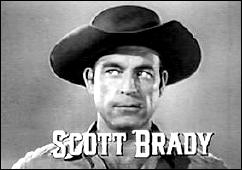
Essentially, when not a Whodunit (identifying the criminal) it is a Whydunit (the reasons for the crime). While the puzzle factor does indeed lie at the heart of the genre, the shape and structure of the puzzle may adopt a myriad of forms.
Certain basic characteristics can be deduced from the presentations themselves. It is more often than not contemporary. It has an urban setting (the city). It involves a crime of some nature (murder and robbery being among the foremost).
But these, of course, are not the mandatory hallmarks of a TV Crime & Mystery. The Western, for instance, has lawmen and outlaws, gunfighters and hold-ups, but they are hardly crime and mystery. Although in keeping with the TV vein here, the 1870s investigations of gunfighter/private eye for-hire Shotgun Slade (syndicated, 1959-61) and the police procedurals of Denver police detective Whispering Smith (NBC, 1961) may well be the cause for some constructive argument. And not forgetting Richard Boone’s early forensics in NBC’s Hec Ramsey (1972-74).
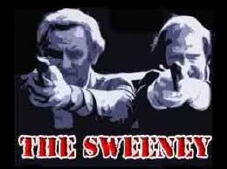
It has been expressed before that realism rather than stylization, a sense of authenticity and not outright adventure are the keynotes. The settings, the look, the narrative, and the procedure are all intended to be realistic. Or at least plausible. Content may often appear to be ritualized and behaviour somewhat stereotyped, but the characters are (in the majority of cases, at least) individuals rather than archetypes.
In this view, the TV genre is at times variably flexible and tends to be audience-led. It often bows to contemporary flavours and fashions. Its richest moments, however, offer access to a world not normally afforded the ordinary citizen, the slightly sinister world of the dogged detective or the cynical street cop, the nocturnal prowling of the private eye or the ice-cold operation of a secret agent.
The spirit of the genre is that law and order must be maintained at all costs, or, from the flip side of the coin, outwitted, outsmarted, and even defeated.
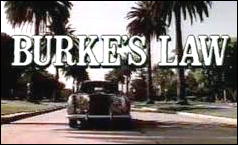
It can take the form of the pursuit: quiet and observational (as in Maigret [BBC, 1960-63], Agatha Christie’s Poirot [ITV, 1989-93; 1995]) or physically fast and furious (The Sweeney [ITV, 1975-76; 1978], Starsky and Hutch [ABC, 1975-79]), or even the long-form (The Fugitive [ABC, 1963-67]). It can be a psychological chess game (Cracker [ITV, 1993-96]), a medical examination (Quincy ME [NBC, 1976-83]), or a forensic probe (CSI: Crime Scene Investigation [CBS, 2000-present]).
The setting can range from Miss Marple’s cozy English village of St. Mary Mead to the dangerous night-time streets of The Wire’s Baltimore. Then there’s the milieu, the occupational routine of the sleuth. Or the social and/or professional world they inhabit. The hospital/medical milieu (Diagnosis Murder [CBS, 1993-2001]). The clerical milieu (Father Dowling Mysteries [NBC, 1989; ABC, 1990-91]). Wealthy eccentrics (Burke’s Law [ABC, 1963-65]). Horse racing (The Racing Game [ITV, 1979-80]). Et cetera, et cetera…
Because it contains so many elements and facets related to crime, engaging the viewer from a variety of directions, the TV genre can not be defined precisely.
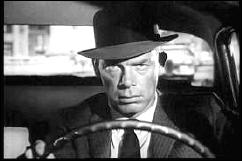
The basic story-telling characteristics are an extrapolation of the forms and formats of, in one-part, the literary genre, one-part the radio drama and one-part the cinema. The TV form (not unlike the literary form) can embrace almost any genre, and can pursue any narrative strand. It can be set in the past or in the present. It can select as its point of narrative focus the law enforcer, the criminal, or the innocent bystander. It can be a TV play, a TV film, a miniseries/limited serial, an episodic series, or a series of self-contained episodes or thematic episodes (the anthology).
The detective or sleuth character is usually the leading figure in the narrative. Leading the path that the viewer is obliged to take, they follow the pattern of the investigation. It is the sleuth’s particular application to the details of the crime that provides the dramatic interest or action (whether the gung-ho tactics of a Lt. Frank Ballinger of M Squad [NBC, 1957-60] or the careful scrutiny of a Hercule Poirot).
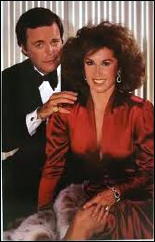
The sleuth may have an assistant (Sherlock Holmes and Dr. Watson) or a partner (Inspector Morse and Sergeant Lewis). Or may consist of the a team (Ironside [NBC, 1967-75]) or a specialised squad (the cold cases unit of Waking the Dead [BBC, 2000-present]).
The subgenre of the private detective provides, usually, the loner (Peter Gunn [NBC, 1958-60; ABC, 1960-61], Shoestring [BBC, 1979-80]). Among the subdivisions are the amateur sleuths (Hettie Bainbridge Investigates [BBC, 1996-98], Kate Loves a Mystery [NBC, 1979]) and the sleuth couple (The Thin Man [NBC, 1957-59], Hart to Hart [ABC, 1979-84], Wilde Alliance [ITV, 1978]).
They can belong to established organisations (The FBI, Scotland Yard, MI5, the CIA, the French Sûreté, Interpol) or carry out their assignments on behalf of made-up agencies (U.N.C.L.E., C.O.N.T.R.O.L., Nemesis, CI5).
The most popular, and the most associated with the TV genre, has been the police drama. Mainly the Police Detective (Columbo [NBC, 1971-77; ABC, 1989-93], Inspector Morse [ITV, 1987-2000]) but also the Police Officer (Dixon of Dock Green [BBC, 1955-76], Joe Forrester [NBC, 1975-76]).
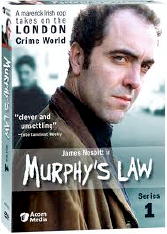
Among the subdivisions here are the undercover cop (Wiseguy [CBS, 1987-90], Murphy’s Law [BBC, 2001-2007]), the internal affairs/investigations cop (Between the Lines [BBC, 1992-94]), as well as the mobile cop (Z Cars [BBC, 1962-78], Highway Patrol [syndicated, 1955-59], CHiPs [NBC, 1977-83]).
The Adventurer. Thrill seeker; often on the lookout for dangerous and exciting experiences. Perhaps a round-up of the expected suspects along these lines would include Roger Moore’s The Saint (ITV, 1962-69), Robert Beatty’s Bulldog Drummond (in “The Ludlow Affair” pilot [ITV, 1958] for Douglas Fairbanks Jr Presents), The Agatha Christie Hour (with “The Case of the Discontented Soldier” [ITV, 1982]), Raffles (ITV, 1977), Josephine Tey’s Brat Farrar (BBC/A&E, 1986), Modesty Blaise (pilot; ABC, 1982), The Lone Wolf (syndicated, 1954), Jason King (ITV, 1971-72), The Baron (ITV, 1966-67) and, since this type of programming seems to have the greatest appeal to casual TV viewers, the countless others that we could all name.
The Private Detective (or Private Eye) has had a long and popular run in the TV genre. In the traditional American sense (77 Sunset Strip [ABC, 1958-64] as team, The Rockford Files [NBC, 1974-80] as loner) as well as the more British tradition of the ‘consulting detective’ (The Adventures of Sherlock Holmes [ITV, 1984-85], Agatha Christie’s Partners in Crime [ITV, 1983-84]), along with the occasional UK leanings toward the American style (Public Eye [ITV, 1965-75]).
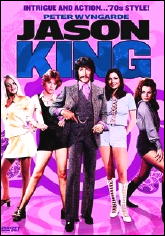
The Hard-Boiled sleuth (Mickey Spillane’s Mike Hammer [syndicated, 1957-59]) comes into this category. Also the amateur sleuthings of The Snoop Sisters (NBC, 1973-74) and The Beiderbecke Affair (ITV, 1985), either by design (a sense of over-curiosity) or by accident.
Perhaps as a footnote to the private detective division is the insurance investigator (John Ireland in The Cheaters [ITV, 1962-63]) or investigator for the diamond industry (Broderick Crawford in King of Diamonds [syndicated, 1961]).
The Lawyer sleuth and the Legal Procedural offer stories combining both private investigation and courtroom drama (Perry Mason [CBS, 1957-66], Sam Benedict [NBC, 1962-63]), and in more recent times the format has been used for corporate as well as constitutional enquiry (L.A. Law [NBC, 1986-94], Judge John Deed [BBC, 2001-2007]).
Spies, government agents and espionage have been in the literary genre almost as long as the crime and mystery genre itself. However, for the most part, their activities on both the printed page and the small screen have been popular for as long as there has been established political enemies to fight – which means, the genre was popular for most of the last century and remains (with the threat of terrorism), unfortunately, popular today.
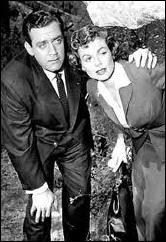
The television espionage genre has presented the spy (the Anglo-U.S. side, of course) as either a lone crusader (during the communist witch-hunt early 1950s; I Led Three Lives [syndicated, 1953-56]) or as part of a secret, highly organised corporation, an element that reached its peak of popularity (quite often as parody) during the 1960s (The Avengers [ITV, 1961-69], The Man from U.N.C.L.E. [NBC, 1964-68]).
Later, Callan (ITV, 1967; 1969-72) returned the genre to a more serious track, culminating in John le Carré’s Tinker, Tailor, Soldier, Spy in 1979. The highly popular Spooks (BBC, 2002-present; in U.S. as MI-5), for instance, features a youthful team of operatives involved in anti-terrorist activities. And so it goes…
The Period Sleuth has been popular on UK television since the early 1970s. A winning combination of costume drama and detective fiction, the works of such authors as Christie, Conan Doyle, Dorothy L. Sayers, G.K. Chesterton, and others, have produced the sagas of Lord Peter Wimsey (BBC, 1972-75), Father Brown (ITV, 1974), Campion (BBC, 1989), the ITV Sherlock Homes series (with Jeremy Brett; 1984 to 1994), Agatha Christie’s Poirot (ITV, 1989-93; 1995) and The Mrs Bradley Mysteries (BBC, 1998-99). The fascinating Canadian series Murdoch Mysteries (Citytv, 2008-present) continues to fascinate.
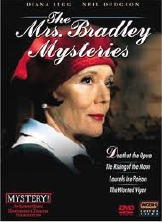
Occasionally, there are observations on contemporary life from the distant viewpoint of ancient Rome and Medieval England (the Falco and Brother Cadfael stories, respectively). The most popular period, it seems, is the fairly recent past, roughly the late Victorian era of Sherlock Holmes and Jack the Ripper to the ‘nostalgic’ decade of the 1960s with Crime Story (NBC, 1986-88) and Heartbeat (ITV, 1992-2010).
A small note on the future and/or fantasy as ‘setting’: Isaac Asimov’s Caves of Steel (BBC, 1964); The Outer Limits (ABC) episodes “The Invisibles” and “Controlled Experiment” (both from 1964); The X Files (Fox, 1993-2002); Star Cops (BBC, 1987).
The Scientific Sleuth has surfaced intermittently over the decades (The Hidden Truth [ITV, 1964], The Expert [BBC, 1968-69; 1971; 1976]) until 2000 when CSI blazed a trail that brought the work of forensics experts to the fore.
Weapons and ballistics experts have featured in past stories, and currently Dexter (Showtime, 2006-present) has amassed an unexpectedly popular following by portraying the work of a blood splatter specialist (alongside his alter ego as a serial killer). The criminal psychologist has also gained a following over the years, especially with the success of Cracker in 1993 (Profiler [NBC, 1996-2000], Wire in the Blood [ITV, 2002-2008]).
Needless to say, there is more to the TV Crime & Mystery than just the above basic descriptions. In time, I intend to discuss aspects of the TV Gaslight Era drama, the Underworld, the Psychological Thriller, and other related TV forms.
In Part Two of PRIME TIME SUSPECTS, I will trace early examples of the genre (from 1930s/1940s TV works by Christie, Edgar Wallace, G.K. Chesterton, Patrick Hamilton and Edgar Allan Poe, among others), leading up to the episodic series of the late 1940s (such as The Plainclothesman, 1949-54).
Note: The introduction to this series of columns on TV mysteries and crime shows may be found here.
February 9th, 2011 at 5:28 pm
As someone who has studied, written about and for television and film since 1975, I eagerly await further posts.
I am especially interested in learning more about the British TV crime drama. There is too little written about British TV available here in the States. Even many that have appeared on American television such as DEPARTMENT S are now sadly forgotten.
Perhaps you can sometime share your thoughts about the Christie school vs Hammett school and its carry over to British TV vs American TV.
February 9th, 2011 at 6:57 pm
Related to this, way back in THE ARMCHAIR DETECTIVE Marvin Lachman did an index of genre characters that had appeared on television either in series format or one offs.
Re the Scientific Sleuth, of course there was QUINCY, and Patrick O’Neal as Dr. Daniel Coffee, a Craig Kennedy series(available on DVD), a few others here in the States.
I look forward to more information on many of the British series we have sadly missed here.
Oh, and just for those interested the Scott Brady western pi series SHOTGUN SLADE was created by pulp giant and mystery novelist Frank Gruber.
February 9th, 2011 at 7:39 pm
SHOTGUN SLADE is available on DVD.
Don’t forget Q.E.D. for Scientific Sleuths, a British production for a limited TV series on CBS.
Don’t know if any of you saw the disappointing PIONEERS OF TELEVISION look at TV crime drama. It talked about POLICE WOMAN being a pioneer for women police officers and ignored Beverly Garland in DECOY.
Tise has all ready done a better job looking back at crime drama than that PBS series did.
February 9th, 2011 at 7:46 pm
Looks like an excellent series. I’d like to echo Michael and David and hope for extensive coverage of the British or UK TV crime series. I’ve watched many of them and am impressed concerning their high quality.
February 9th, 2011 at 7:56 pm
I also was disappointed with PIONEERS OF TELEVISION. 50 minutes is just not enough time to discuss the quality shows appearing as crime dramas. The western segment was very poor also.
I have many of the DECOY episodes on dvd and was surprised to see PIONEERS lack of knowledge concerning the fact that POLICE WOMAN was not the first series about women officers. DECOY with Beverly Garland was 20 years ahead of POLICE WOMAN.
February 9th, 2011 at 11:28 pm
I agree PIONEERS OF TELEVISION was pretty bad. Very shallow and incomplete. A few good interviews, but beyond that it had little to say. After raving about Peckinpah’s work on the RIFLEMAN it didn’t even mention how many episodes of the half hour version of GUNSMOKE he wrote, or THE WESTERNER which was easily the most offbeat and adult western on the air.
I loved the short lived Q.E.D., great show, and there was a fairly good Asimov created series with Parker Stevenson (MYSTERIES OF SCIENCE?). DOOMWATCH and THE ELEVENTH HOUR, while often dealing with science fictional menace to some extent, also featured a good deal of mystery and detective work.
In a slightly differnt vein the third season of the tenth DOCTOR WHO had a good episode where he teamed with Agatha Christie to solve an English country house mystery. Of course aliens were involved, but it was still a nice tribute.
In a different vein I enjoyed THE PROTECTORS, a half hour British series with Robert Vaughn and Nyrie Dawn Porter as international private eyes. Great catchy title song “In the avenue and alleyways …” It’s available on DVD as well — the complete run.
One of the ‘gimmicks’ was that Vaughn’s Harry Rule used a personal computer to gather info and keep in contact with his fellow investigators. I still remember the thing took up something like half his apartment it seemed.
February 10th, 2011 at 1:56 pm
Mention of “The Protectors” reminds me of “The Zoo Gang” with Lilli Palmer, Brian Keith and John Mills. It was based on a novella by Paul Gallico. Another British produced show (ITV?) but was shown in syndication in the US in the late 1970s. A witty caper show that was along the lines of “Mission: Impossible.” And a theme song by Paul McCartney & Wings!
BTW – that Agatha Christie episode in the DOCTOR WHO series was very clever and made use of the mysterious amnesia episode in her life prior to her divorce from womanizing Archibald. The scriptwriter managed to incorporate the titles of about 15 of her books into the dialogue.
February 10th, 2011 at 2:36 pm
David’s mention of the computer role in detective TV fiction reminded me of SEARCH and the first season of MANNIX.
February 10th, 2011 at 6:54 pm
Tise: Before starting this article I suspect that you took a very deep breath. It covers an enormous number of different types of TV crime drama, along with examples of such, and yet it is only scratching the surface. If anyone were to produce a book about every single programme of this type, I suspect that it would collapse under its own weight and puncture the space/time contiunuum. This is a great overview, though (although I suspect that however many categories and sub-categories we can come up with, someone else will always be able to create another sub-sub-category).
Off on a sort of tangent, I was looking at an article from THE INDEPENDENT from the start of last year. It predicted the end of the traditional Brit crime drama, and lauded such ‘new’ approaches to the genre as LUTHER. Amusing to see that LUTHER was a notable disaster, whilst one of the top crime shows of last year was SHERLOCK, which revived one of the earliest literary ‘tecs. Seems that there’s life in the old form yet!
February 10th, 2011 at 7:38 pm
Bradstreet
Was LUTHER a disaster? The few reviews of it I’ve read seemed to mirror THE INDEPENDENT’s predictions.
Sounds like it was a critical success but a ratings disaster?
From the little I know about both programs, I know this. I’d rather watch SHERLOCK too.
— Steve
PS. I’m with you in awe looking ahead at what Tise plans to cover — it was exactly what I was thinking while I was putting together this collection of images to add.
February 10th, 2011 at 8:26 pm
There will be a second season of LUTHER.
BRADSTREET, I did not see the article but I do see the British crime drama going more to hardboiled style than the softboiled style of Christie. Even SHERLOCK (the very first Sherlock Holmes I liked) was more modern urban set with violence than the usual Holmes.
Gosh, what is next, Miss Marple with a shotgun?
February 11th, 2011 at 12:23 am
The one constant with British crime dramas seems to be they will more likely be innovative and different. Unlike, sadly, the American model which will usually continue ro be imitative and only rarely original.
February 12th, 2011 at 4:35 pm
The reason that I was so down on LUTHER was that it seemed like someone running into a used car showroom and shouting “Hey! I’ve invented the wheel!” Troubled ‘tec fighting his inner demons as he hunts down evil killers…it’s been done to death, yet the writer, when interviewed, seemed blithely unaware that he was treading very familiar ground. The public at large seemed to lose interest very quickly, and the ratings went down week by week. Hope that the new series is more popular, but we’ll have to see. SHERLOCK was great because although the series took place ‘now’, this updating wasn’t really the central gimmick. Sherlock demonstrates his genius by means of brilliant deductions, rather than by just telling us how clever he is. This was Doyle’s original approach, and makes SHERLOCK very different to most other detective shows.
February 12th, 2011 at 5:27 pm
I was disappointed with LUTHER as well, but my problem was they did something never done before and wasted it. Luther teaming up with the young psycho that he knew killed her parents was different. Having her fall for Luther and how Luther ended up linked to her was as if Holmes replaced Watson with Moriarty. And yet the series was just another series about a violent out of control cop.
I fell for Stephen Moffat’s SHERLOCK when Holmes made a mistake about Watson’s sister and shrugged it off. Holmes never being wrong always annoyed me no end. Moffat’s version made him more human and believable to me.
February 13th, 2011 at 3:06 am
The thing about Holmes’ fallibility was another way in which they returned to Doyle’s character rather than relying on the public perception of the detective. In THE SOLITARY CYCLIST he makes a small mistake in his summing up of the case, and one of villains cries out “Lie number one!” and corrects him. That ability to fail has always seemed to be one of the reasons that he has remained alive and vital as a literary character.
April 21st, 2011 at 8:56 am
[…] Part 1: Basic Characteristics (A Swift Overview) […]
June 5th, 2011 at 3:54 pm
[…] Part 1: Basic Characteristics (A Swift Overview) Part 2.0: Evolution of the TV Genre (UK) Part 2.1: Evolution of the TV Genre (US) […]
June 27th, 2011 at 11:24 pm
[…] Part 1: Basic Characteristics (A Swift Overview) Part 2.0: Evolution of the TV Genre (UK) Part 2.1: Evolution of the TV Genre (US) Part 3.0: Cold War Adventurers (The First Spy Cycle) Part 3.1: Adventurers (Sleuths Without Portfolio). […]
July 3rd, 2011 at 5:51 pm
[…] Part 1: Basic Characteristics (A Swift Overview) Part 2.0: Evolution of the TV Genre (UK) Part 2.1: Evolution of the TV Genre (US) Part 3.0: Cold War Adventurers (The First Spy Cycle) Part 3.1: Adventurers (Sleuths Without Portfolio). Part 4.0: Themes and Strands (1950s Police Dramas). […]
February 28th, 2018 at 3:52 pm
For those interested in Francis Durbridge, my new book “Francis Durbridge: The Complete Guide” will be published in spring 2018 by Williams & Whiting. It will cover all his works – books, newspaper/magazine stories, radio, television, comic strips, the stage and films.